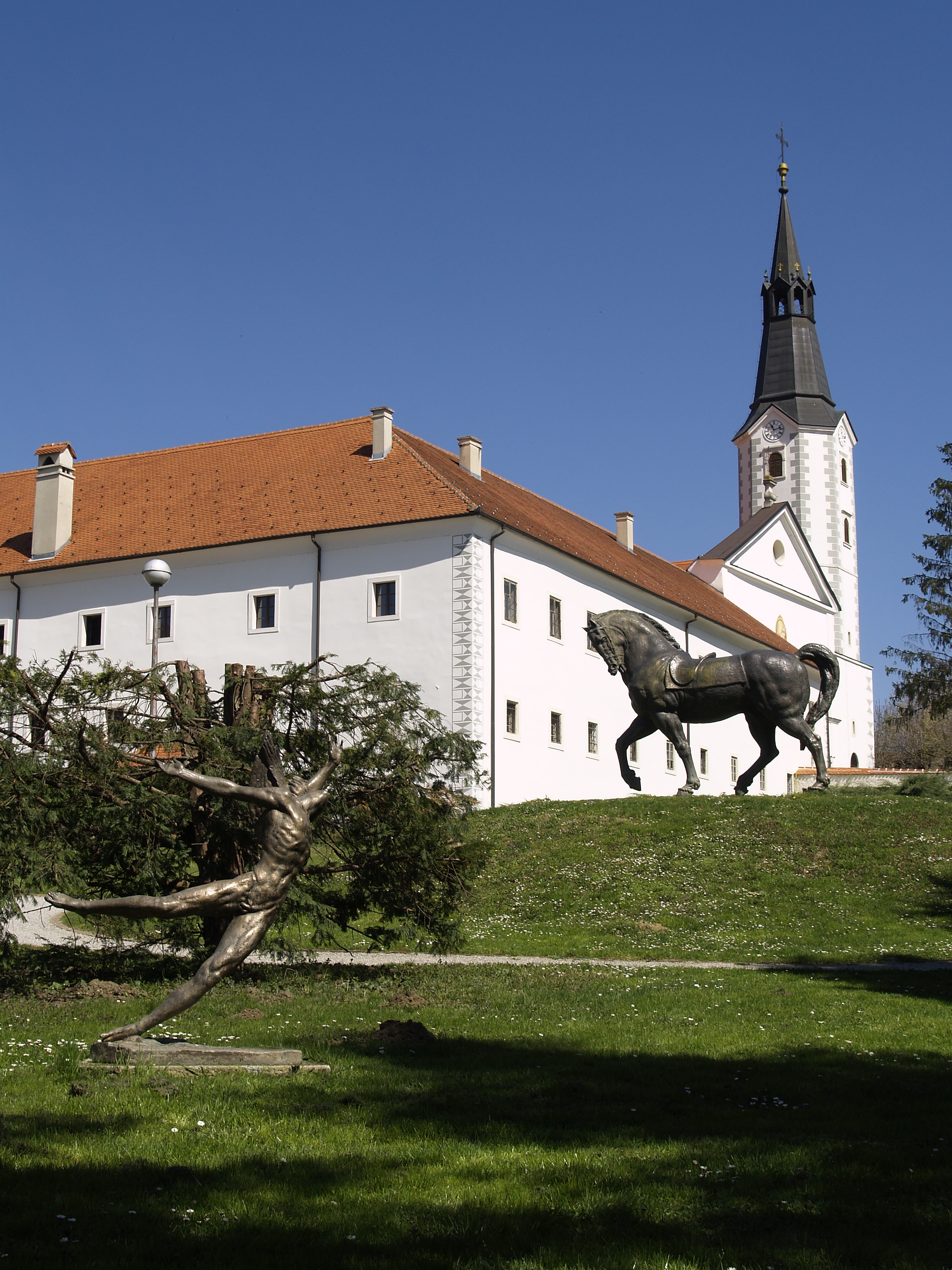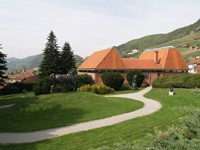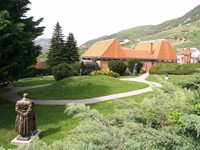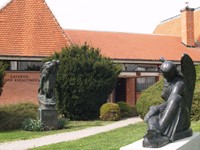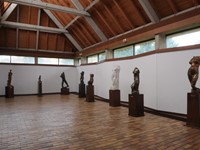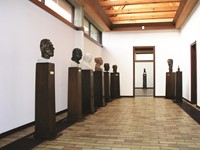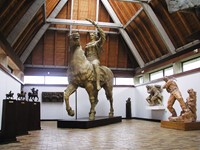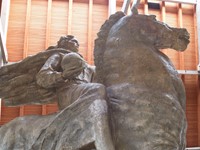A GALLERY is a place where various works of art like drawings, paintings and sculptures are displayed. In our Gallery all works of art are three-dimensional. They are called SCULPTURES and they were all made by one artist – Antun Augustinčić, a sculptor.
Antun Augustinčić was born in Klanjec in 1900. He was a student and then a professor at the Academy of Visual Arts in Zagreb. In his long artistic career he made a large number of sculptures and monuments which are displayed in Croatia and in many other countries. In his lifetime he became famous as one of the greatest Croatian sculptors. He died in 1979. At his request the urn with his ashes was placed below the monument called Carrying the Wounded which is on the left side of the Gallery entrance.
Artists observe, feel, and show the world in their own way. That is why the sculptures you will see do not always look like things that we usually see around us. We must watch sculptures very carefully to be able to understand what they tell us, because sculptures do not speak in words. Instead, they speak with their shape, volume, space, plane, surface, line, and colour.
To be able to see an entire sculpture we sometimes have to walk around it and look at it from all sides. Such sculptures are called SCULPTURES IN THE ROUND or FREE-STANDING SCULPTURES. Other sculptures can only be seen from the front and the sides, because the back of the figure is left rough or is attached to a background surface. These sculptures are called SCULPTURES IN RELIEF. If you read the tags below the sculptures you will learn their names, the year when they were made, and the material from which they were created.
ROOM I (on the left)
Sculptures in this room show the artist’s interest in the human body (child’s, woman’s, and man’s) in different postures and movements. One of the most frequents postures is called COUNTERPOISE. The weight of the body is on one foot so the body makes a slight S-curve in order to keep its balance. We can notice this posture even if sculpture is not showing an entire body.
Sculpture that represents a naked human body is called a NUDE. If it only shows body trunk (without the head and limbs) it is called a TORSO. You will easily notice two torsos of the same model but made of different materials. One is carved in marble, the other is cast in bronze. Compare the differences that arise from two types of material, for example the soft play of light and shade on the marble torso, as opposed to sharp distinction between light and shade on the bronze one.
You will surely notice lines or cuts on the plaster cast called Torso (1952). These lines are called SEAMS and they show where the parts of the casting mold were joined. Sometimes the artist leaves them visible to create a special effect. Other sculptures were cast in a similar way, by using casts made of several pieces. The very large sculptures which you will find in Room III were cast piece by piece and connected in the showroom.
ROOM II (the connecting corridor)
This room displays PORTRAITS of famous people like artists, politicians, and Augustinčić’s friends. Each portrait is different and each represents its subject in the most recognizable way, even if it does not look exactly like that person. Try to find out how the shape of a sculpture depends on the material from which it is created (wood, stone, bronze) and you will understand why these and not some other materials were selected for each particular portrait. The displayed portraits mostly show heads, but some of them are called BUSTS (sculptures representing the head, shoulders, and chest) or HALF-LENGTHS.
ROOM III (on the right)
Room III displays sculptures that made Augustinčić most famous: PUBLIC MONUMENTS. These sculptures are very large. They are intended to stand in public places, most often in town squares. Some of the exhibits are life-size plaster cast MODELS of real monuments, and others are SKETCHES of monuments. Sketches show us on a small scale the artist’s original idea of a monument. You can check the difference or similarity between the sketch and the monument by examining these two monuments: Peace, which stands next to the United Nations building in New York, and Carrying the Wounded. The Peace monument is also a good example of SYMBOLIC STATUE because the female figure on the horse holds the Earth in one hand and an olive branch in the other hand and thus symbolizes world peace.
THE SCULPTURE PARK
Take a rest in the yard of the Gallery with the Monument to Marin Držić at your side. Augustinčić shows the greatest Croatian comedy writer as a renaissance actor. You are now in the outdoor section of the exhibition in which sculptures are displayed in OPEN AIR. Some of them were originally created to decorate the space in which they stood, like those that are part of FOUNTAINS, while others were made to be MONUMENTS: some are PUBLIC MONUMENTS, and some are TOMBSTONES. The only sculpture in the Gallery that has kept its monumental function is Carrying the Wounded, which now serves as the tombstone for Nada and Antun Augustinčić.
(B. P.)


